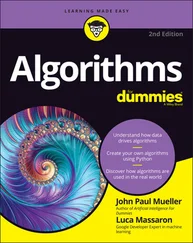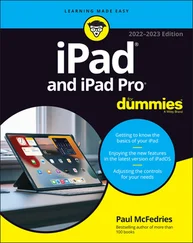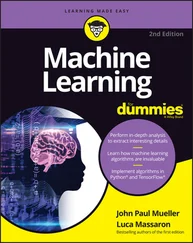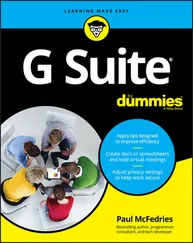Finding Reiki on the mountaintop
In 1922 Mikao Usui went for a spiritual pilgrimage to Mount Kurama, which is near Kyoto, Japan. Usui fasted and meditated for 21 days while he was on this retreat from the world. He sought a spiritual experience of enlightenment, total awareness, and deep peace.
Usui received the profound experience he was seeking along with the system of Reiki. He found that along with his spiritual awakening, he had the ability to heal himself and others.
Usui was a great healer and was reported to have helped many victims of the 1923 earthquake in Japan, which hit the cities of Tokyo and Yokohama.
Mikao Usui began imparting his spiritual experiences to others. Hands-on healing and spiritual healing were popular in Japan in the early 1900s. Usui refined his teachings to a system that more closely resembles the Reiki that is taught today.
The aim of Usui’s teaching was to give students the tools for their own spiritual enlightenment and healing. Usui’s system of healing included the following:
Reiki principles (see Chapter 4)
Reiki hand positions (see Chapter 11)
Meditation (see Chapter 9)
Symbols and mantras (see Chapter 8)
Attunement (initiation) process (see Chapter 7)
Mikao Usui is known to have varied his teachings depending on the student, so the teachings that were passed on by each student would differ. (See the later section “ Letting Reiki Branches Differ.”)
Some of Usui’s teachings (or derivations of his teachings) are found in a Japanese teaching manual called Usui Reiki Hikkei: The Usui Reiki Ryoho Gakkai Handbook, which has been translated from the Japanese. (See Frank Arjava Petter’s books in Appendix Aand www.threshold.ca/reiki/Handouts/Threshold-Reiki--Reiki-Ryoho-Hikkei.pdf .) This manual provides insight into early Reiki teaching. It contains the following:
Reiki Principles (see Chapter 4), which were called “the secret method to invite happiness.”
“Usui’s Message about Reiki,” in which he introduces the concept of his teachings to the general public. (See the nearby sidebar “Usui Reiki Ryoho Gakkai.”)USUI REIKI RYOHO GAKKAIUsui Reiki Ryoho Gakkai began as a group of naval officers who had studied with Mikao Usui. Formed in 1926, it continues to be active. For decades the Gakkai has remained a relatively private and restricted society.The lineage of officers is as follows:Mikao UsuiJuzaburo UshidaKanichi TaketomiYoshiharu WatanabeHoichi WanamiKimiko KoyamaMasaki KondoTakahashi Ichita
Healing Guide, a series of hand positions that was probably developed by Chujiro Hayashi (see the later section “ Exploring the Medical Approach: Chujiro Hayashi”); for a Western derivation of these positions, see Chapter 11.
Meiji Emperor’s Poems (called gyosi in Japanese), short poems on topics such as nature that were recited as a way to focus the mind.
Usui’s answers to students’ questions.
 Note that Mikao Usui taught more than 90 years ago — before the age of the course syllabus or computers. His individual style with each student makes it impossible to re-create his teachings exactly. What can be done, however, is to follow the essence of Reiki as best as possible.
Note that Mikao Usui taught more than 90 years ago — before the age of the course syllabus or computers. His individual style with each student makes it impossible to re-create his teachings exactly. What can be done, however, is to follow the essence of Reiki as best as possible.
Mikao Usui died in 1926. By the time of his death, he was thought to have trained approximately 2,000 students overall, including 21 who achieved the Master Teacher level. Some well-known teacher students of Mikao Usui include the following:
Toshishiro Eguchi: A friend of Mikao Usui who learned Usui’s system but also taught his own palm healing (tenohira) system at Usui’s center. Eguchi continued to teach and was a famous healer in Japan with his center, Tenohira Ryoji Kenkyo Kai. Eguchi published two books: Tenohira Ryoji Nyumon (An Introduction to Healing with the Palms) in 1930 and Tenohira Ryoji Wo Kataru (A Tale of Healing with the Palms of the Hands) in 1954.
Chujiro Hayashi: Created the system Hayashi Reiki Kenkyu Kai. (See the later section “ Exploring the Medical Approach: Chujiro Hayashi.”)
Kaji Tomita: Became a famous healer and author in Japan. He called his hand-healing system Tomita Teate Ryoho. His book was called Reiki to Jinjutsu — Tomita Ryu Teate Ryoho (Reiki and Humanitarian Work — Tomita Ryu Hand Healing).
Juzaburo Ushida and Kanichi Taketomi: Both past presidents of Usui Reiki Ryoho Gakkai, a Japanese Reiki society that has been active since the time of Mikao Usui (or just after his death). See the nearby sidebar “Usui Reiki Ryoho Gakkai” for more info.
Note that even among Usui’s original students, creation of individually modified Reiki branches took place.
Considering Reiki before Mikao Usui
Some Reiki teachers have suggested that Mikao Usui not so much founded Reiki but refound this ancient form of healing. Here are two versions of these theories:
Reiki is an ancient healing energy, but it had become lost. Usui channeled this lost ancient energy while meditating on Mount Kurama.
Reiki came from Buddhist texts, and Mikao Usui found these texts in his research.Certainly, Buddhism influenced Mikao Usui’s system. Usui himself was a lay Buddhist priest (which meant he could live with his family) and lived in a country that practiced Buddhism and Shintoism. Development of the symbols was certainly influenced by Buddhism. (See Chapter 8for more information about the symbols.)
 Mikao Usui called his system unique, and thus far no researcher has been able to prove that Usui’s system of natural healing comes from any particular Buddhist text or ancient civilization. Mikao Usui found a way to a universal truth: that healing and enlightenment are possible, and everyone is capable of this healing and enlightenment. Usui developed his system of Reiki precisely because he wanted to share with others what he had found.
Mikao Usui called his system unique, and thus far no researcher has been able to prove that Usui’s system of natural healing comes from any particular Buddhist text or ancient civilization. Mikao Usui found a way to a universal truth: that healing and enlightenment are possible, and everyone is capable of this healing and enlightenment. Usui developed his system of Reiki precisely because he wanted to share with others what he had found.
Exploring the Medical Approach: Chujiro Hayashi
Chujiro Hayashi was one of Mikao Usui’s students who had a huge influence on the further development of Reiki. When Hayashi studied with Usui, he was a retired naval medical officer. Hayashi was able to spend ten months learning Reiki from Usui before Usui died in 1926.
Dr. Hayashi, a surgeon, brought a medical approach to the practice of Reiki with his knowledge of anatomy and medicine. He prepared a manual of hand positions that treated different illnesses.
He also set up the first Reiki clinic, which brought Reiki healing into a medical model of treatments. His clinic was able to treat at least eight people simultaneously on separate mats or futons, with two practitioners working on each recipient.
Dr. Hayashi passed on Reiki to students by using symbols and mantras during the attunement process (see Chapter 7). Branches of Western Reiki use this modern process.
 Chujiro Hayashi, though a retired naval officer, was a man of peace. As World War II approached, he knew that Japan would go to war and that he would be called back to duty. So at the age of 40, he decided to end his life rather than be forced to kill people in military action.
Chujiro Hayashi, though a retired naval officer, was a man of peace. As World War II approached, he knew that Japan would go to war and that he would be called back to duty. So at the age of 40, he decided to end his life rather than be forced to kill people in military action.
The branch of Reiki that Dr. Hayashi developed was called Hayashi Reiki Kenkyu Kai; his wife Chie Hayashi continued this branch after he died. This branch doesn’t seem to have survived, but Dr. Hayashi’s teachings have continued through his two most well-known Reiki Master students:
Читать дальше
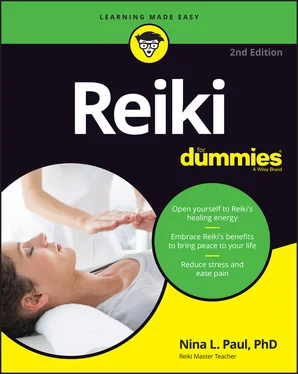
 Note that Mikao Usui taught more than 90 years ago — before the age of the course syllabus or computers. His individual style with each student makes it impossible to re-create his teachings exactly. What can be done, however, is to follow the essence of Reiki as best as possible.
Note that Mikao Usui taught more than 90 years ago — before the age of the course syllabus or computers. His individual style with each student makes it impossible to re-create his teachings exactly. What can be done, however, is to follow the essence of Reiki as best as possible. Chujiro Hayashi, though a retired naval officer, was a man of peace. As World War II approached, he knew that Japan would go to war and that he would be called back to duty. So at the age of 40, he decided to end his life rather than be forced to kill people in military action.
Chujiro Hayashi, though a retired naval officer, was a man of peace. As World War II approached, he knew that Japan would go to war and that he would be called back to duty. So at the age of 40, he decided to end his life rather than be forced to kill people in military action.

